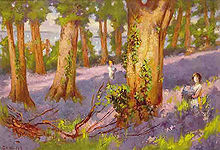The Ulster Unionist Labour Association was an association of trade unionists founded by Edward Carson in June 1918, aligned with the Ulster Unionists in Ireland. Members were known as Labour Unionists. In Britain, 1918 and 1919 were marked by intense class conflict. This phenomenon spread to Ireland, the whole of which was under British rule at the time. This period also saw a large increase in trade union membership and a series of strikes. These union activities raised fears in a section of the Ulster Unionist leadership, principally Edward Carson and R. Dawson Bates. Carson at this time was president of the British Empire Union, and had been predisposed to amplify the danger of a Bolshevik outbreak in Britain.

James Joseph Magennis, VC was a Belfast-born sailor and recipient of the Victoria Cross, the highest award for gallantry in the face of the enemy that can be awarded to British and Commonwealth forces. He was the only native of Northern Ireland to receive the Victoria Cross in the Second World War.
Paul Henry was an Irish artist noted for depicting the West of Ireland landscape in a spare post-impressionist style.
David Marcus Robinson was an Irish painter and sculptor with a primitive representational style.

Sir John Lavery was an Irish painter best known for his portraits and wartime depictions.
Events from the year 1889 in Ireland.

The culture of Northern Ireland relates to the traditions of Northern Ireland. Elements of the Culture of Ulster and the Culture of the United Kingdom are to be found.

George Seawright was a Scottish-born unionist politician in Northern Ireland and loyalist paramilitary in the Ulster Volunteer Force. He was assassinated by the Irish People's Liberation Organisation in 1987.
Robert Wright "Roy" Walker is a football manager and former player. His most recent job was as manager of NIFL Premiership side Ballymena United.
Thomas Joseph Williams, more commonly known as Tom Williams, was a volunteer in C Company, 2nd Battalion of the Belfast Brigade in the Irish Republican Army from the Bombay Street area of Belfast, Northern Ireland. He was hanged in the Crumlin Road Gaol for his involvement in the killing of Royal Ulster Constabulary (RUC) police officer, Patrick Murphy during the Northern Campaign.
Henry Cassidy Midgley, PC (NI), known as Harry Midgley was a prominent trade-unionist and politician in Northern Ireland. Born to a working-class Protestant family in Tiger's Bay, north Belfast, he followed his father into the shipyard. After serving on the Western Front in the Great War, he became an official in a textile workers union and a leading light in the Belfast Labour Party (BLP). He represented the party's efforts in the early 1920s to provide a left opposition to the Unionist government of the new Northern Ireland while remaining non-committal on the divisive question of Irish partition.
Events from the year 1849 in the United Kingdom.

Sir Richard Dawson Bates, 1st Baronet, known as Dawson Bates, was an Ulster Unionist Party member of the Northern Ireland House of Commons.
Frank McKelvey was an Irish painter from Belfast.
John Henry Whyte was an Irish historian, political scientist and author of books on Northern Ireland, divided societies and church-state affairs in Ireland.

Keith John Jeffery MRIA was a Northern Irish historian specialising in modern British, British Imperial, and Irish history.

The Irish National Liberation Army Belfast Brigade was the main brigade area of the Irish National Liberation Army (INLA). The other Brigade areas were in Derry City, south County Londonderry and County Armagh, with smaller units in Newry, east and west County Tyrone and south County Fermanagh.

Cecil Maguire was an Irish landscape and figure painter. His work appears in such collections as those at the UN headquarters in New York and the Ulster Museum in Belfast.
Dennis Henry Osborne HRUA was a British artist and teacher who worked mainly in oil and watercolour. Osborne exhibited widely in Canada, Ireland and the UK. He was a follower of the Euston Road School and the Post-Impressionist Paul Cézanne. He was a Honorary Academician of the Royal Ulster Academy of Arts.











